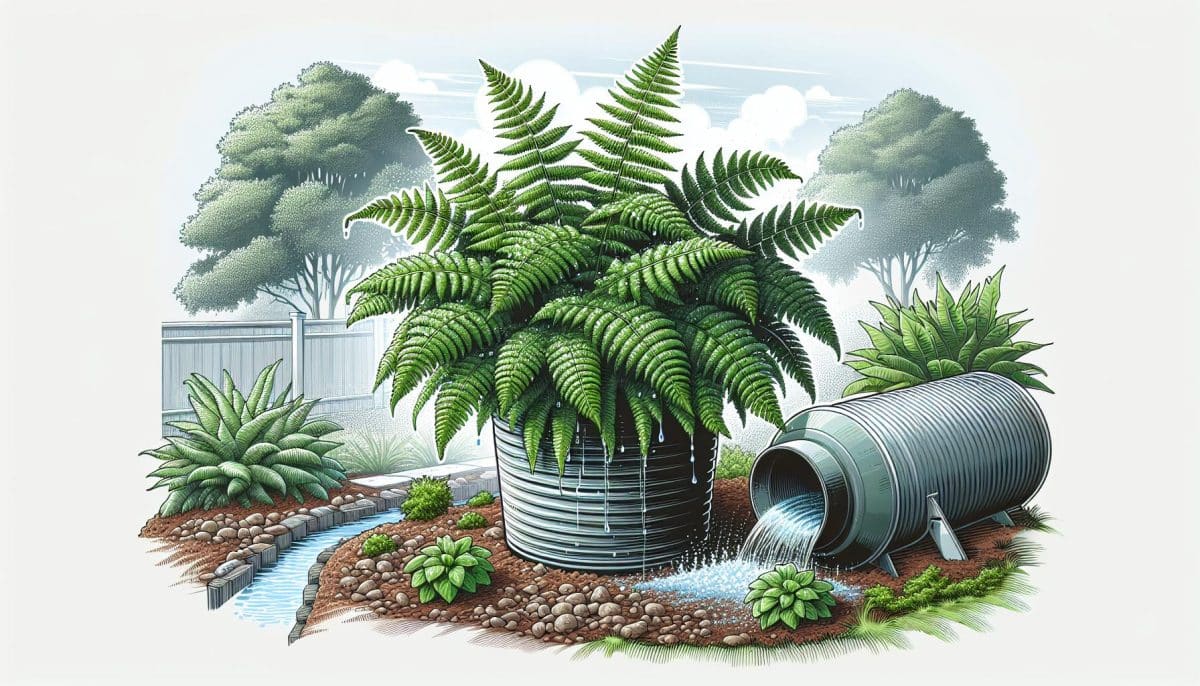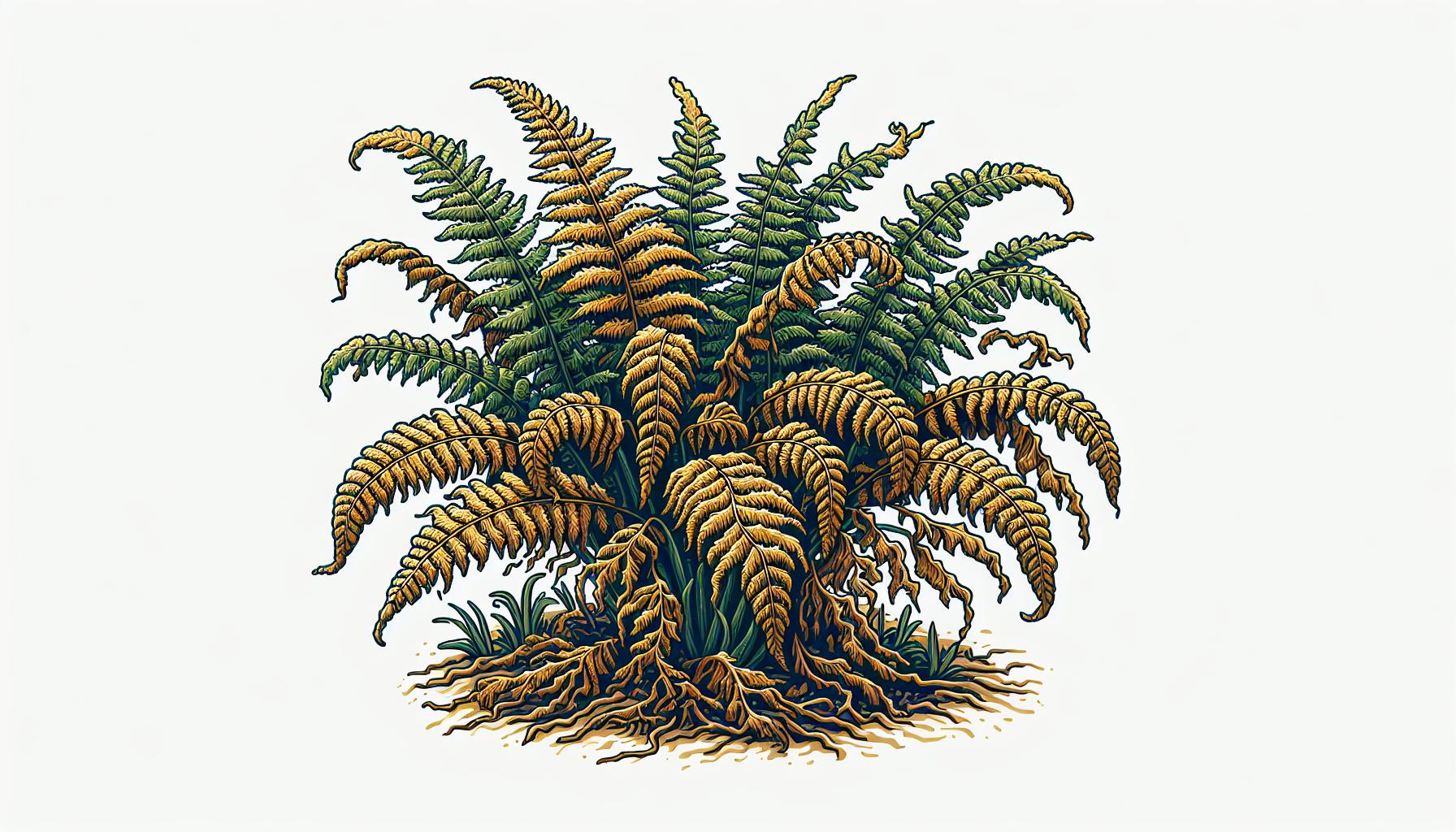
Caring for your outdoor ferns means understanding their thirst for moisture. You’ve probably wondered just how often to quench their need without overdoing it. It’s a delicate balance, but with the right know-how, you’ll ensure your ferns flourish.
In the world of gardening, ferns hold a special place with their lush, green fronds creating a serene ambiance. They’re not as high-maintenance as you might think, but getting the watering schedule right is key to their health and beauty. Let’s dive into the specifics to keep your ferns thriving.
Understanding Outdoor Ferns and Their Water Needs
When cultivating outdoor ferns, it’s vital to grasp their specific watering requirements to keep them lush and vibrant. These plants thrive in moist, well-drained soil; hence, regular watering is essential, especially during dry spells.
Outdoor ferns come from environments where moisture is readily available, and their root systems are adapted to these conditions. Inconsistent watering can lead to stress, which in turn may cause leaf drop and a lacklustre appearance. To maintain the delicate ecosystem in which these ferns flourish:
- Ensure the soil remains consistently moist, not soggy
- Check the top inch of soil for dryness as a guide
- Water the plants in the morning to allow moisture absorption throughout the day
Optimal Watering Techniques for Ferns
Knowing how to water is just as important as knowing when. A gentle shower from a watering can mimics the natural rain their habitat provides. Avoid overhead watering that disrupts the fronds and aim for the base of the fern to prevent fungal diseases often caused by excess moisture on the foliage.
Environmental Considerations
Your ferns’ watering schedule isn’t one-size-fits-all; it varies depending on several factors:
- Seasonal Changes: Ferns generally require more water during spring and summer’s growth spurts.
- Weather Patterns: More frequent watering during prolonged dry periods and less during rainy weeks.
- Soil Type: Sandy soils drain faster and require more frequent watering, while clay soils retain moisture longer.
Regular observation and adjustment of your watering routine is key to meeting the changing needs of outdoor ferns.
Factors to Consider when Watering Outdoor Ferns

Environmental Conditions
Your local climate plays a pivotal role in determining how frequently you’ll need to water your outdoor ferns. In hot and dry conditions, ferns may require water more often to compensate for the increased evaporation rate. Conversely, in cooler or more humid climates, you might find that your ferns retain moisture for longer periods.
Seasonal Changes
Seasons greatly influence your fern’s watering needs. During spring and summer, when ferns are actively growing, they may need more frequent watering. However, when autumn rolls around and winter sets in, your ferns will enter a dormant phase with a reduced need for water.
Soil Type
The type of soil in your garden is crucial to your watering strategy. Sandy soils drain quickly and do not retain moisture, whereas clay soils hold water longer. Assess your soil type and adjust your watering regimen accordingly.
Fern Species
Remember that not all ferns are created equal. Some species are drought-resistant and need less water, while others may naturally thrive in very moist environments. Identify your fern species and research its specific water requirements.
Fern Size and Container
The size of your fern and its container (if it’s not planted in the ground) also dictate watering frequency. Larger ferns in small pots will dry out faster than smaller ferns or those in larger containers. Ensure that containers have proper drainage to prevent waterlogged roots.
Signs of Underwatering Ferns

Underwatering ferns can be just as detrimental as overwatering. Recognising the signs of dehydration in your ferns is crucial to preventing long-term damage. Pay attention to the following symptoms to ensure your ferns are getting adequate moisture:
- Foliage Discoloration: One of the first signs of underwatering is a change in foliage colour. Your ferns’ leaves may turn from a vibrant green to a dull, yellowish hue.
- Dry Soil: When you check the soil, it should feel moist to the touch. Dry, crumbly soil indicates a lack of water, and it’s a clear sign that your ferns are thirsty.
- Wilting Leaves: Fern leaves that droop or curl are sending out an SOS for hydration. If the fronds do not perk up after watering, they’ve likely been dry for too long.
- Brittle Texture: Ferns naturally have a soft and lush texture. If the leaves start to feel brittle or crispy, it’s a signal that they are not receiving enough water to maintain their healthful state.
- Slow Growth: While ferns are generally not fast-growing plants, a noticeable slowdown in growth or a lack of new fronds can be attributed to inadequate watering.
If you observe any of these signs, adjust your watering routine immediately to prevent further stress on your plants. Remember to water thoroughly, allowing excess water to drain, ensuring that the moisture reaches the roots. Regular monitoring and timely intervention can help revive your ferns and encourage them to thrive in their outdoor environment.
Signs of Overwatering Ferns

While understanding the delicate balance of watering your outdoor ferns, it’s equally crucial to recognize when you’ve gone a step too far. Overwatering is a common issue that can lead to serious problems for your plants.
Symptoms of Too Much Water
When you overwater ferns, they show clear signs of distress:
- Yellowing leaves: This is often the first sign that your ferns are getting too much water. Instead of the lush, green colour you’re used to, the leaves may start turning a sickly yellow.
- Soggy soil: If the soil feels more like a swamp than moist earth, you’re likely overdoing it. Ferns need well-draining soil to prevent water from pooling around the roots.
- Root rot: A serious condition caused by excess moisture, root rot can ultimately destroy your fern. If you notice blackened roots or a musty smell when you check the soil, root rot could be the culprit.
Adjusting Your Watering Routine
To counteract overwatering:
- Reduce Your Frequency: Cut back on how often you water your ferns. Allow the top inch of the soil to dry out before watering again.
- Improve Drainage: Make sure your ferns are planted in containers with adequate drainage holes or in well-draining soil to avoid waterlogging.
Monitoring your ferns regularly for these signs is crucial. Take action quickly to correct your watering schedule if any symptoms of overwatering appear. Your ferns’ health relies on your vigilance and ability to adapt to their needs.
Finding the Right Watering Schedule for Outdoor Ferns

To ensure your outdoor ferns thrive, it’s essential to hone a watering schedule that caters to their needs. This involves balancing factors such as climate, season, and the specific type of fern you’re nurturing. Begin by understanding your local weather patterns. Heavy rainfall or drought conditions can significantly affect how often you’ll need to water your ferns.
Assess Your Environment
Consider the following environmental factors:
- Sunlight Exposure: Ferns in more sunlight may require more frequent watering.
- Soil Type: Sandy soils drain faster than clay, affecting moisture retention.
- Seasonal Changes: Ferns typically need more water during the warmer months.
By observing these variables, you’ll get a sense of whether your ferns need daily, weekly, or bi-weekly watering.
Consistency Is Key
While ferns enjoy moist soil, they despise being waterlogged. Aim for consistent moisture levels by establishing a regular routine. Stick to early morning watering to prevent evaporation and fungal growth.
Monitor Plant Responses
Pay close attention to how your ferns react to your watering schedule. Lush, green growth usually indicates that they’re receiving the right amount of water. Here are some signs to look out for:
- Drooping leaves suggest under-watering.
- Brown or crispy leaves can signal overexposure to sun or under-watering.
- Soft, black stems or leaves might be a symptom of over-watering.
Adjust your routine accordingly, ensuring each fern gets just the right amount to drink without going overboard.
Best Practices for Watering Outdoor Ferns

Recognising the correct watering practices for outdoor ferns is key to maintaining their luscious appearance and overall health. Here, you’ll find tailored advice that will ensure your ferns thrive in their natural outdoor setting.
Morning Watering Promotes Optimal Growth
Water your ferns early in the day. This practice reduces evaporation and allows water to reach the roots before the heat of the day can cause stress to the plant.
Use Rainwater When Possible
- Collect and store rainwater
- Mimics the natural hydration ferns would receive in the wild
- Typically softer and more acidic, which suits the pH preferences of most ferns
Check Soil Moisture Levels Regularly
Before watering, perform a simple soil test. Push your finger into the soil up to the second knuckle. If the soil feels dry at that level, it’s time to water.
Adjust Watering Frequency with Seasons
Different seasons demand different watering frequencies:
- Spring and Summer: Higher temperatures and longer daylight hours may increase the need for water.
- Autumn and Winter: Growth slows down and so does the need for watering.
Mulching Is Your Ally
Mulch helps:
- Retain soil moisture
- Regulate soil temperature
- Prevent weed growth
Choose an organic mulch such as shredded leaves or bark, and spread it around the base of the fern without touching the stems.
Balance Is Crucial
Too much water can be just as harmful as too little. Ensure that your outdoor ferns are planted in well-draining soil and inspect the drainage system regularly. Signs of poor drainage include water pooling around the plant after watering. If you notice this happening, consider aerating the soil or improving the drainage system.
Conclusion
Mastering the art of watering your outdoor ferns ensures they thrive and bring a lush, green touch to your garden. Remember to water them in the morning, opt for rainwater when available, and always keep an eye on soil moisture levels. Don’t forget, the changing seasons will dictate your watering schedule, so stay attentive and adjust accordingly. With the right balance and care, your ferns will flourish, showcasing the rewards of your gardening efforts with their vibrant fronds. Happy gardening!
Colin Macmillan is a seasoned entrepreneur and the CEO of Riverwood Landscape, a leading landscaping company based in Canada. He has been at the helm of the company since leaving high school, demonstrating his strong leadership skills and business acumen.
Colin’s expertise lies in various aspects of landscaping, including lawn care, interlocking, sod installation, and commercial maintenance. His hands-on approach and dedication to the craft have been instrumental in building Riverwood Landscape into a reputable brand.
One of his most notable achievements is the creation of a successful landscape franchise that services multiple locations. This accomplishment underscores his strategic thinking and ability to scale operations effectively.
Colin has also had the privilege of working with Guelph Hospital for landscaping and maintenance, a testament to the trust and reliability that his company has earned over the years.
His professional mission is to offer the best services and experiences for customers, a goal that he tirelessly pursues. Colin’s commitment to excellence and customer satisfaction continues to drive the growth and success of Riverwood Landscape.








